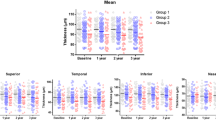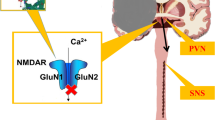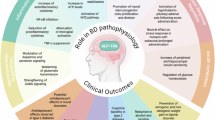Abstract
Noradrenergic dysfunction and abnormality in monoamine oxidase (MAO) enzyme activity have been reported previously in Lesch-Nyhan (LN) disease. This study examines peripheral indices of adrenergic, noradrenergic, and MAO function in children and young adults with LN disease (n = 11), and healthy subjects (n = 9). Blood samples, collected in identical conditions prior to a positron emission tomography (PET) study, were assayed for concentrations of epinephrine (EPI), norepinephrine (NE), and 3-methoxy-4-hydroxyphenylglycol (DHPG) (which results from the degradation of NE by monoamine oxidase type A [MAO-A]). The LN subjects had significantly higher EPI levels by 245% (p < .00) and lower DHPG levels by 42% (p < .00) compared to the control group. No group differences were noted in NE plasma levels. Cognitive function (IQ tested by Stanford Binet Intelligence Scale) was associated with EPI in the LN group (r = 0.77, p = .009), but not in the control group. The abnormally high EPI plasma concentrations may indicate another biochemical dysfunction secondary to the absence of the HPRT enzyme in LN patients. Such a biochemical deficit is likely to originate from the adrenal medulla, which is the primary site of EPI synthesis. The adrenal medulla may be directly affected by the absence of hypoxanthine guanine phosphoribosyl transferase (HPRT) enzyme, or may receive inappropriately high descending activation input from the brain. The abnormally low DHPG levels, in the context of normal NE levels, indicates low MAO activity, either as a primary deficit, or as secondary adaptive changes to spare NE levels that would otherwise be too low for adequate noradrenergic function.
Similar content being viewed by others
Log in or create a free account to read this content
Gain free access to this article, as well as selected content from this journal and more on nature.com
or
References
American Psychiatric Association. (1987): Diagnostic and statistical manual of mental disorders. 3rd ed (revised). Washington, DC, American Psychiatric Association Press
Anderson LT, Ernst M . (1994): Self-injury in Lesch-Nyhan Disease. J Autism Dev Disord 24: 67–81
Anderson LT, Ernst M, Davis SV . (1992): Cognitive abilities of patients with Lesch-Nyhan Disease. J Autism Dev Disord 22: 189–203
Breakefield XO, Castiglione CM, Edelstein SB . (1976): Monoamine oxidase activity decreased in cells lacking hypoxanthine phosphoribosyltransferase activity. Science 192: 1018–1020
Breese GR . (1984): Neonatal-6-hydroxydopamine treatment: Model of susceptibility for self-mutilation in the Lesch-Nyhan syndrome. Pharmacol Biochem Behav 21: 459–461
Brunner H, Nelen M, Breakfield X, Ropers H, Van Oost A . (1993): Abnormal behavior associated with a point mutation in the structural gene for monamine oxidase A. Science 22: 578–580
Cases O, Seif I, Grimsby J, Gaspar P, Chen K, Pournin S, Muller U, Aguet M, Babinet C, Shih JC, De Maeyer E . (1995): Aggressive behavior and altered amounts of brain serotonin and norepinephrine in mice lacking MAOA. Science 268: 1763–1766
Coccaro EF . (1996): Neurotransmitter correlates of impulsive aggression in humans. Ann NY Acad Sci 20 (794): 82–89
Dunnett SB, Sirinathsinghji DJ, Heavens R, Rogers DC, Kuehn MR . (1989): Monoamine deficiency in a transgenic (Hprt-) mouse model of Lesch-Nyhan syndrome. Brain Res 501: 401–406
Eisenhofer G . (1986): Simultaneous liquid-chromatographic determination of 3,4-dihydroxyphenylglycol, catecholamines, and 3,4-dihydroxyphenylalanine in plasma, and their responses to inhibition of monoamine oxidase. Clin Chem 32: 2030–2033
Elwood SW . (1986): Catecholamine response of children in a naturally occurring stressor situation. J Human Stress 12: 154–161
Endicott J, Spitzer RL . (1978): A diagnostic interview: The schedule for affective disorders and schizophrenia. Arch Gen Psychiatry 35: 837–844
Ernst M, Zametkin AJ, Matochik JA, Pascualvaca D, Jons PH, Hardy K, Hankerson JG, Doudet DD, Cohen RM . (1996): Presynaptic dopaminergic deficits in Lesch-Nyhan Disease. N Engl J Med 334: 1568–1604
Finlay JM . (1995): Increased dopamine and norepinephrine release in medial prefrontal cortex induced by acute and chronic stress: Effects of diazepam. Neuroscience 64: 619–628
Gerra G, Avanzini P, Zaimovic A, Fertonani G, Caccavari R, Delsignore R, Gardini F, Talarico E, Lecchini R, Maestri D, Brambilla F . (1996): Neurotransmitter and endocrine modulation of aggressive behavior and its components in normal humans. Behav Brain Res 81: 19–24
Glavin GB . (1983): Effects of altered brain noradrenaline level on acute stress pathology in rats. Kurume Med J 30: 31–34
Goldstein M . (1986): Dopamine agonist induced self-mutilative biting behavior in monkeys with unilateral ventromedial tegmental lesions of the brainstem: Possible pharmacological model for Lesch-Nyhan syndrome. Brain Res 367: 114–120
Haller J, Makara GB, Kruk MR . (1998): Catecholaminergic involvement in the control of aggression: Hormones, the peripheral sympathetic, and central noradrenergic systems. Neurosci Biobehav Rev 22: 85–97
Hollingshead AB, Redlich F . (1958): The two-factor index of social position. In Social Class and Mental Illness. New York, NY, Wiley
Jankovic J, Caskey TC, Stout T, Butler IJ . (1988): Lesch-Nyhan syndrome: A study of motor behavior and cerebrospinal fluid neurotransmitters. Ann Neurol 23: 466–469
Jinnah HA, Wojcik BE, Hunt M, Narang N, Lee KY, Goldstein M, Wamsley JK, Langlais PJ, Friedmann T . (1994): Dopamine deficiency in a genetic mouse model of Lesch-Nyhan disease. J Neurosci 14: 1164–1175
Lake CR, Ziegler MG . (1977): Lesch-Nyhan syndrome: Low dopamine-β-hydroxylase activity and diminished sympathetic response to stress and posture. Science 196: 905–906
Lesch M, Nyhan WL . (1964): A familial disorder of uric acid metabolism and central nervous system function. Am J Med 36: 561–570
Lloyd KG, Hornykiewicz O, Davidson L, Shannak K, Farley I, Goldstein M, Shibuya M, Kelley WN, Fox IH . (1981): Biochemical evidence of dysfunction of brain neurotransmitters in the Lesch-Nyhan syndrome. N Engl J Med 305: 1106–1111
Matthews WS, Solan A, Barabas G . (1995): Cognitive functioning in Lesch-Nyhan syndrome. Dev Med Child Neurol 37: 715–722
Murphy DL . (1991): Plasma amine oxidase activities in Norrie disease patients with an X-chromosomal deletion affecting monoamine oxidase. J Neural Transm Gen Sect 83: 1–12
Reich W, Welner Z . (1988): Diagnostic Interview for Children, Adolescents, and Parents. St. Louis, MO, Washington University
Rockson S . (1974): Lesch-Nyhan syndrome: evidence for abnormal adrenergic function. Science 186: 934–935
Rossiter BJF, Caskey CT . (1994): Hypoxanthine-guanine phosphoribosyltransferase deficiency: Lesch-Nyhan syndrome and gout. In Scriver CR, Beaudet AL, Sly WS, Valle D (eds), The Metabolic and Molecular Bases of Inherited Disease. 7th ed. New York, McGraw-Hill, pp 1679–1706
Silverstein FS, Johnston MV, Hutchinson RJ, Edwards L . (1985): Lesch-Nyhan syndrome: CSF neurotransmitter abnormalities. Neurology 35: 907–911
Stone EA . (1983a): Adaptation to stress and brain noradrenergic receptors. Neurosci Biobehav Rev 7: 503–509
Stone EA . (1983b): Adaptation to stress: Tyrosine hydroxylase activity and catecholamine release. Neurosci Biobehav Rev 7: 29–34
Thorndike RL, Hagen EP, Sattler JM . (1986): The Stanford-Binet Intelligence Scale. 4th ed. Riverside, Chicago Publishing Company
van Doornen LJ . (1992): The relationship between cardiovascular and catecholamine reactions to laboratory and real-life stress. Psychophysiology 29: 173–181
Watts RW . (1987): Lesch-Nyhan syndrome: Growth delay, testicular atrophy and a partial failure of the 11 beta-hydroxylation of steroids. J Inherit Metab Dis 10: 210–223
Wechsler D . (1981): WAIS-R: Wechsler Adult Intelligence Scale—Revised. New York: New York, NY, The Psychological Corporation
Wechsler D . (1974): WISC-R Manual: Wechsler Intelligence Scale for Children—Revised. New York, NY, The Psychological Corporation
Wong DF, Harris JC, Naidu S, Yokoi F, Marenco S, Dannals RF, Ravert HT, Yaster M, Evans A, Rousset O, Bryan RN, Gjedde A, Kuhar MJ, Breese GR . (1996): Dopamine transporters are markedly reduced in Lesch-Nyhan disease in vivo. Proc Natl Acad Sci USA 93: 5539–5543
Acknowledgements
We thank Dr. James Hankerson, Peter Jons, Akia Talbot, Teresa Talliner, and Lars Hungerford for their assistance in performing the study.
Author information
Authors and Affiliations
Rights and permissions
About this article
Cite this article
Ernst, M., Zametkin, A., Pascualvaca, D. et al. Adrenergic and Noradrenergic Plasma Levels in Lesch-Nyhan Disease. Neuropsychopharmacol 22, 320–326 (2000). https://doi.org/10.1016/S0893-133X(99)00119-0
Received:
Revised:
Accepted:
Issue date:
DOI: https://doi.org/10.1016/S0893-133X(99)00119-0



